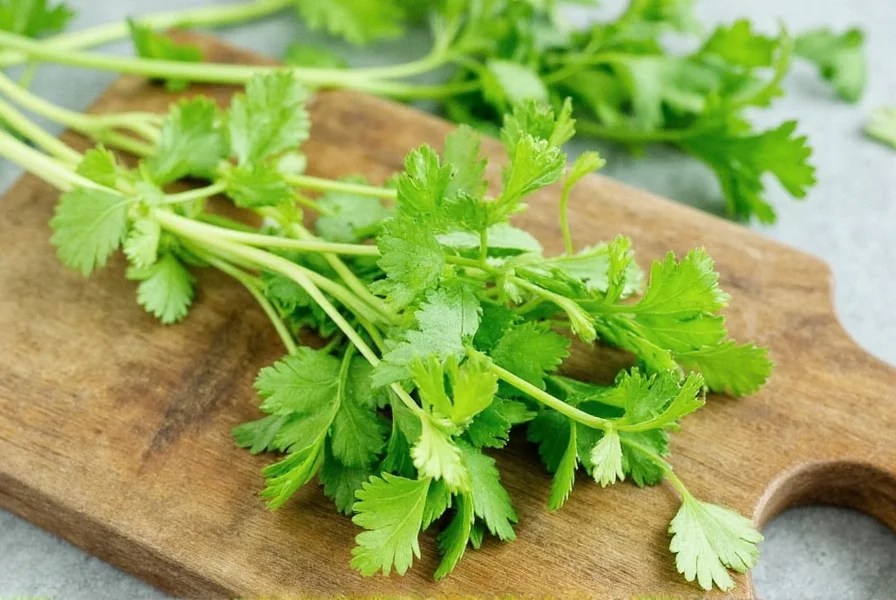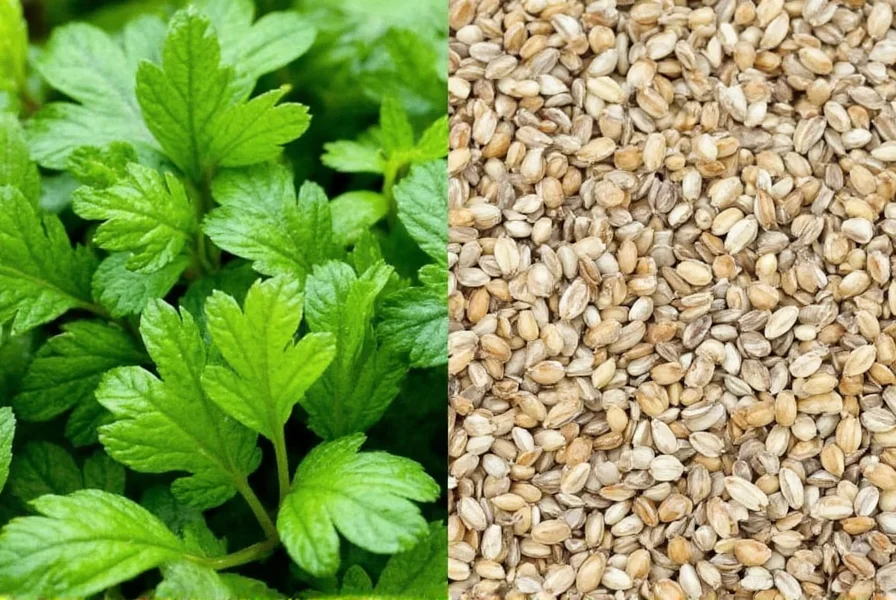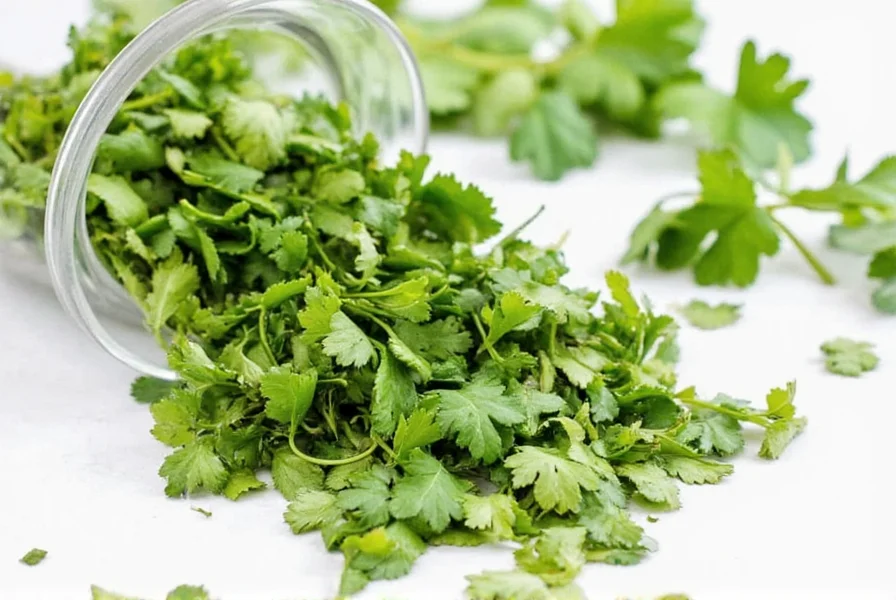When exploring Indian recipes, the term “coriander” creates one of the most common points of confusion for international cooks. Unlike Western culinary terminology, Indian cooking uses this single word to describe two completely different ingredients that play vital roles in the cuisine. This comprehensive guide clarifies the terminology, usage, and importance of coriander in Indian cooking traditions.
Understanding Coriander Terminology in Indian Context
In India, the word “coriander” serves as an umbrella term that encompasses both the fresh herb and the dried spice. The plant Coriandrum sativum produces both components, but their culinary applications differ significantly:
| Component | Indian Name | Western Equivalent | Primary Use in Indian Cooking |
|---|---|---|---|
| Fresh Leaves | Dhaniya (Hindi) | Cilantro | Garnish, chutneys, fresh additions to dishes |
| Dried Seeds | Dhaniya (Hindi) | Coriander seeds | Spice blends, tempering, curry bases |
The same Hindi word “dhaniya” refers to both components, creating additional confusion for non-Hindi speakers. Regional languages have their own terms, but the dual usage pattern remains consistent across India.

Coriander Leaves in Indian Cuisine
Fresh coriander leaves, called “dhaniya patta” in Hindi, feature prominently in Indian cooking. These vibrant green leaves provide a citrusy, slightly peppery flavor that enhances countless dishes. Unlike in Western cooking where cilantro often divides opinion due to its soapy taste perception among some people, coriander leaves enjoy universal popularity across Indian culinary traditions.
Chefs use fresh coriander leaves as:
- Essential garnish for curries, dals, and rice dishes
- Primary ingredient in chutneys and raitas
- Component in marinades for meats and vegetables
- Flavor enhancer in doughs for flatbreads
- Key element in refreshing summer beverages like jaljeera
When substituting fresh coriander in Indian recipes, no perfect alternative exists. While some suggest parsley or mint, these provide different flavor profiles. For authentic results, fresh coriander remains irreplaceable in traditional Indian cooking.
Coriander Seeds: The Foundation of Indian Spice Blends
Dried coriander seeds represent one of the most fundamental spices in Indian pantries. These light brown, spherical seeds deliver a warm, nutty, slightly citrusy flavor that forms the backbone of countless spice blends. Unlike the fresh leaves, coriander seeds require dry roasting before grinding to unlock their full aromatic potential.
Professional Indian chefs emphasize these critical points about coriander seeds:
- Always roast seeds in a dry pan until fragrant before grinding
- Freshly ground coriander loses potency quickly; grind in small batches
- Coriander seeds form the base of garam masala, sambar powder, and many regional spice blends
- The seeds’ mild flavor balances hotter spices like chilies and peppercorns
- Whole seeds maintain freshness longer than pre-ground powder
Understanding the difference between coriander seeds and fresh coriander leaves prevents common mistakes when following Indian recipes. Many beginners mistakenly substitute one for the other, resulting in dishes that lack authentic flavor profiles.
Regional Variations in Coriander Usage
India’s diverse culinary landscape features distinctive coriander applications across regions:
- Northern India: Heavy use of fresh coriander in creamy gravies and as garnish for tandoori dishes
- Southern India: Coriander seeds form the base of sambar powder and rasam powders
- Western India: Fresh coriander essential in chutneys and street food like pani puri
- Eastern India: Coriander seeds feature prominently in fish and vegetable curries
These regional differences highlight why understanding coriander indian terminology matters for authentic cooking. A recipe from Kerala might specify “dhania” meaning seeds, while a Punjabi recipe uses the same term for fresh leaves.

Practical Tips for Cooking with Coriander
Mastering coriander usage elevates your Indian cooking significantly. Consider these professional techniques:
- For fresh leaves: Chop just before use to preserve volatile oils; never cook extensively as heat diminishes flavor
- For seeds: Roast in small batches on medium heat until fragrant (about 2-3 minutes), then cool before grinding
- Storage: Keep whole seeds in airtight containers away from light; fresh leaves last 4-5 days when stems are placed in water
- Substitutions: No perfect substitute exists, but for fresh leaves, try mixing parsley with a squeeze of lime; for seeds, cumin offers some similar earthiness
When following authentic Indian recipes, pay close attention to whether the recipe specifies “fresh coriander,” “coriander leaves,” or “coriander seeds.” This distinction makes the difference between an authentic dish and a culinary misstep.
Common Misconceptions About Coriander in Indian Cooking
Several persistent myths confuse home cooks exploring Indian cuisine:
- Misconception: Coriander and cilantro are different plants
Reality: They come from the same plant; terminology differs by region - Misconception: Coriander seeds taste like fresh coriander leaves
Reality: They have completely different flavor profiles; seeds are warm and nutty while leaves are bright and citrusy - Misconception: Dried coriander leaves work as substitute for fresh
Reality: Dried leaves lose most flavor compounds; they’re not suitable for Indian recipes requiring fresh coriander
Understanding these distinctions prevents common errors when preparing Indian dishes. The difference between coriander and cilantro in India versus Western countries remains the most frequent source of confusion for international cooks.
Frequently Asked Questions
What does coriander mean in Indian cooking?
In Indian cooking, 'coriander' refers to both fresh coriander leaves (known as cilantro in the US) and dried coriander seeds. When unspecified, 'coriander' typically means the fresh leaves, while 'coriander seeds' specifies the dried spice used in Indian cuisine.
Is coriander the same as cilantro in Indian recipes?
Yes, but with important context. In India, fresh coriander leaves are called 'dhaniya' and are what Americans call cilantro. The same plant produces both the fresh leaves and the dried seeds, but Indian recipes treat them as completely different ingredients with distinct culinary purposes.
Can I substitute dried coriander for fresh in Indian recipes?
No, dried coriander leaves do not work as a substitute for fresh coriander in Indian cooking. The drying process destroys most of the volatile oils that give fresh coriander its distinctive flavor. For authentic results, fresh coriander leaves are essential in recipes calling for them.
How should I store coriander seeds for Indian cooking?
Store whole coriander seeds in an airtight container away from light and heat. Properly stored, they maintain freshness for 6-12 months. For best flavor, roast and grind seeds just before use rather than using pre-ground coriander powder, which loses potency quickly.











 浙公网安备
33010002000092号
浙公网安备
33010002000092号 浙B2-20120091-4
浙B2-20120091-4